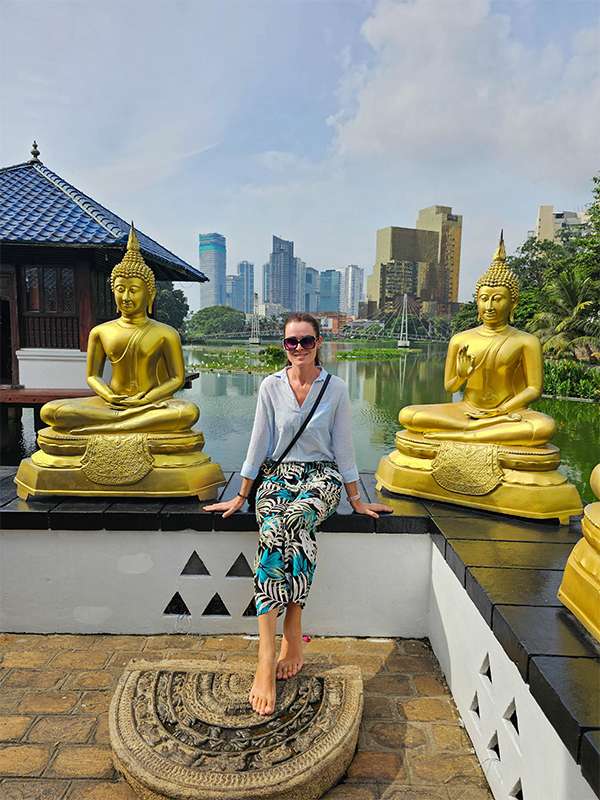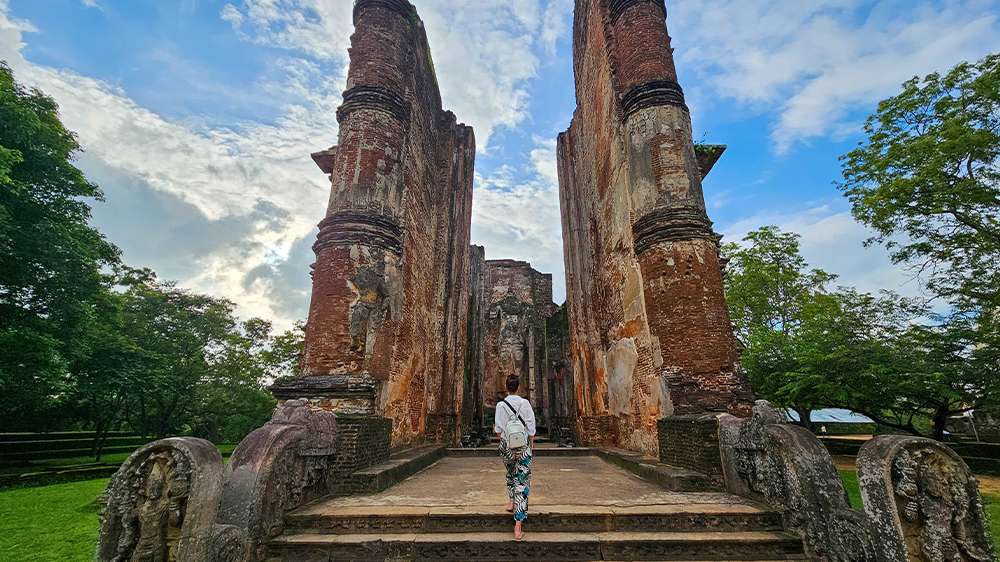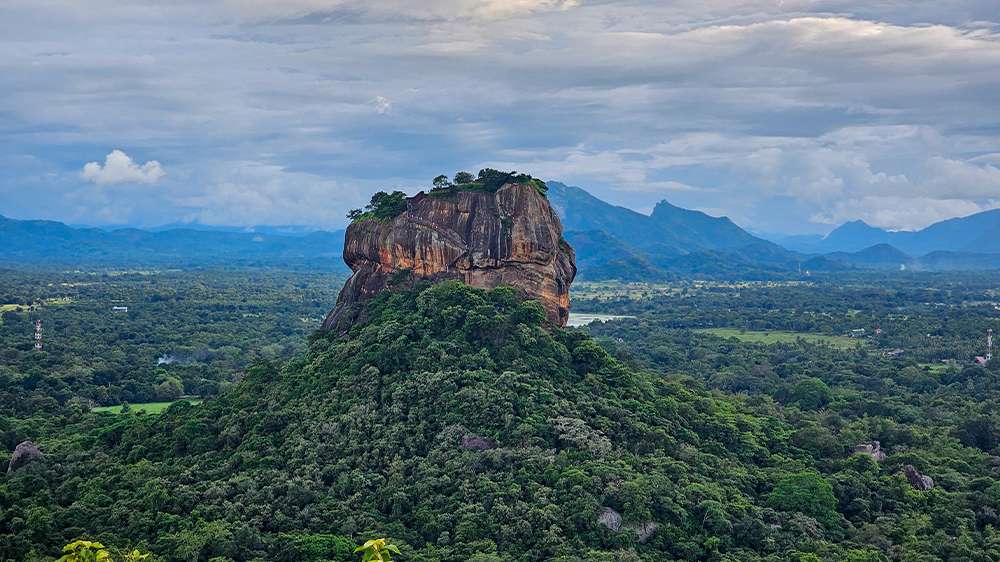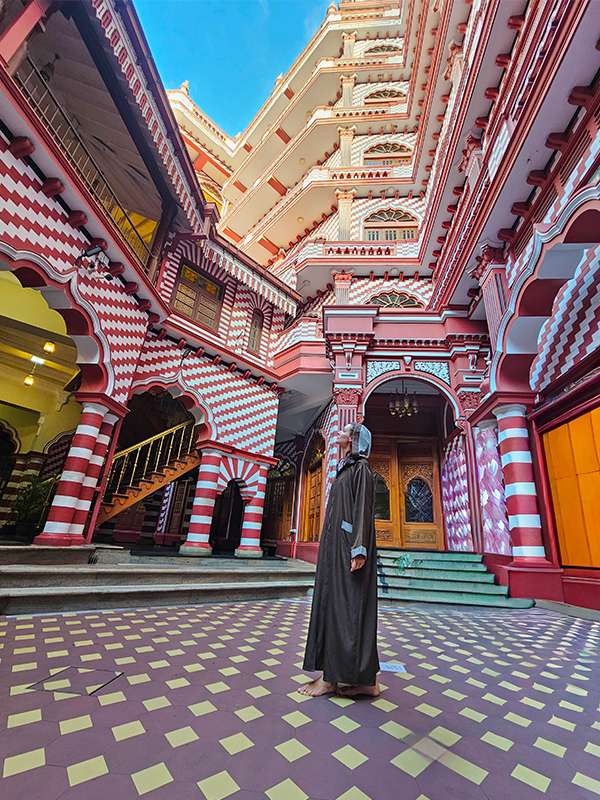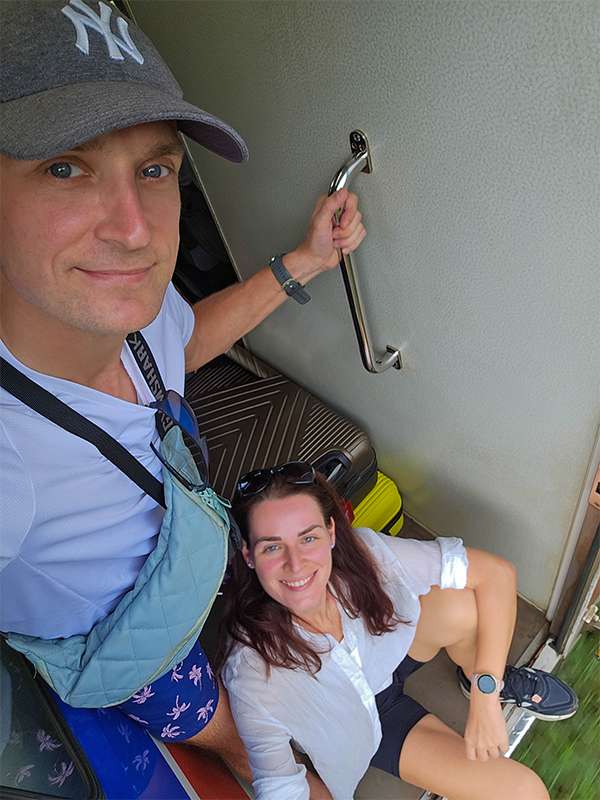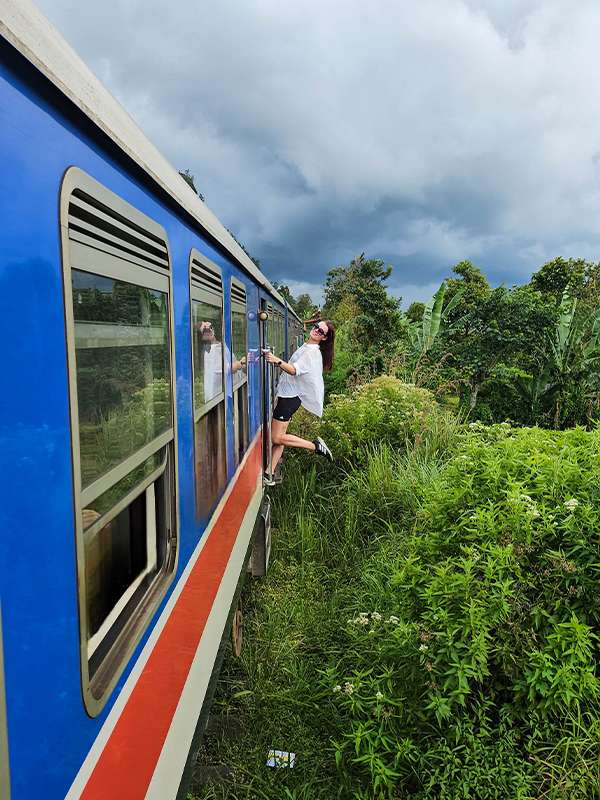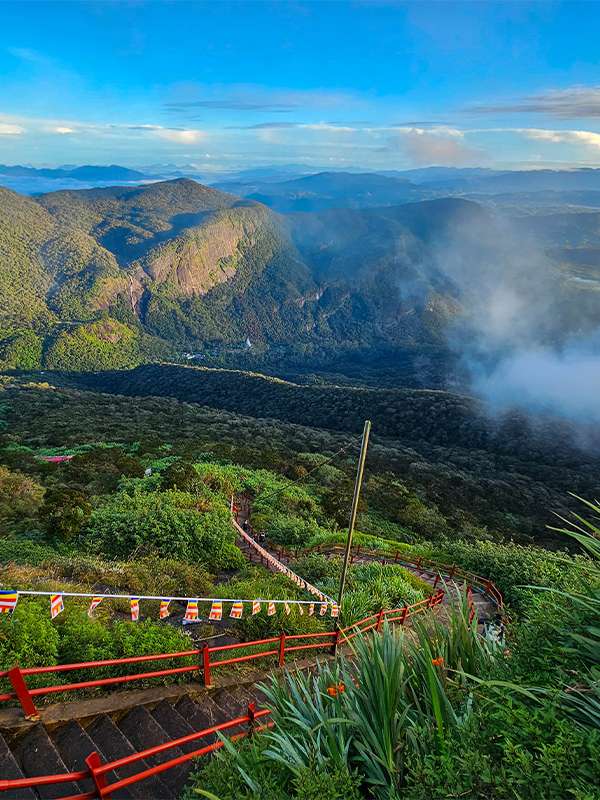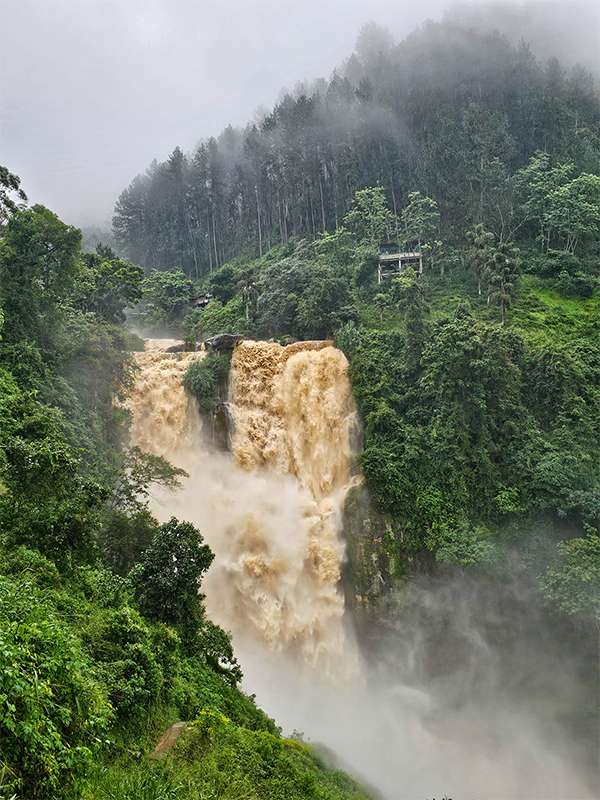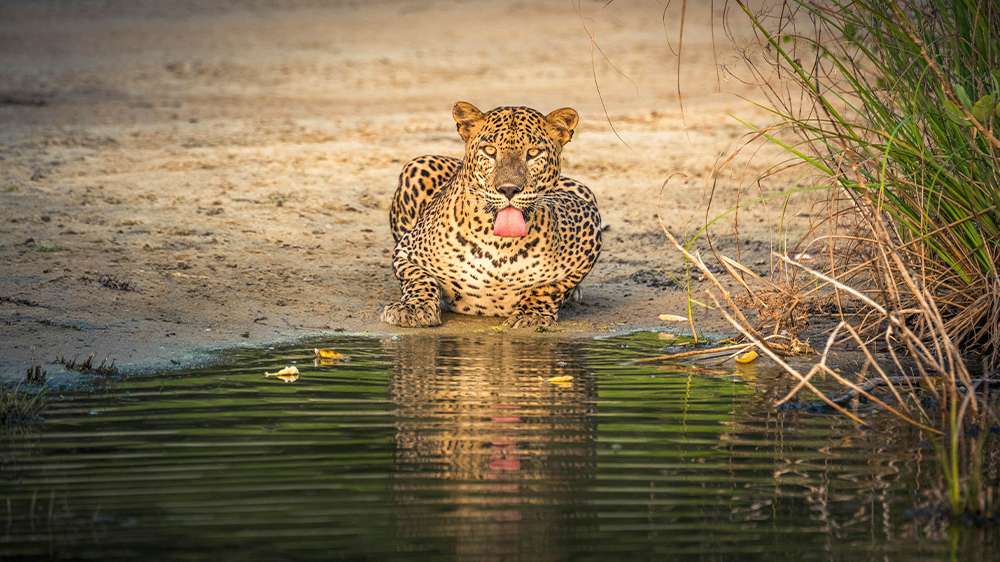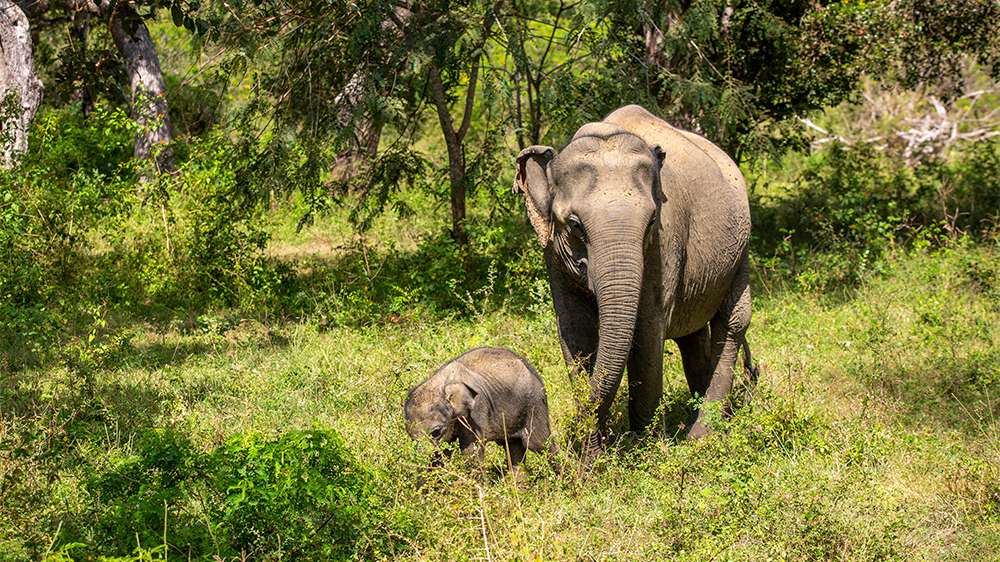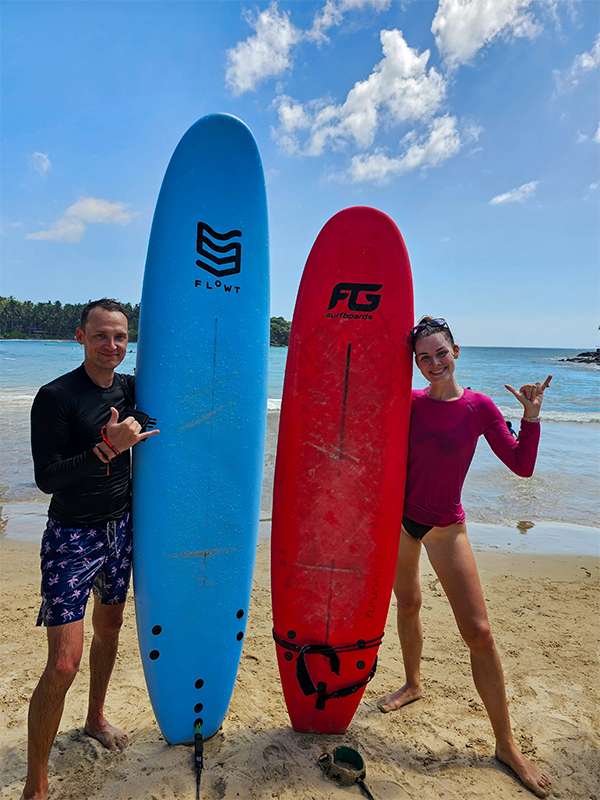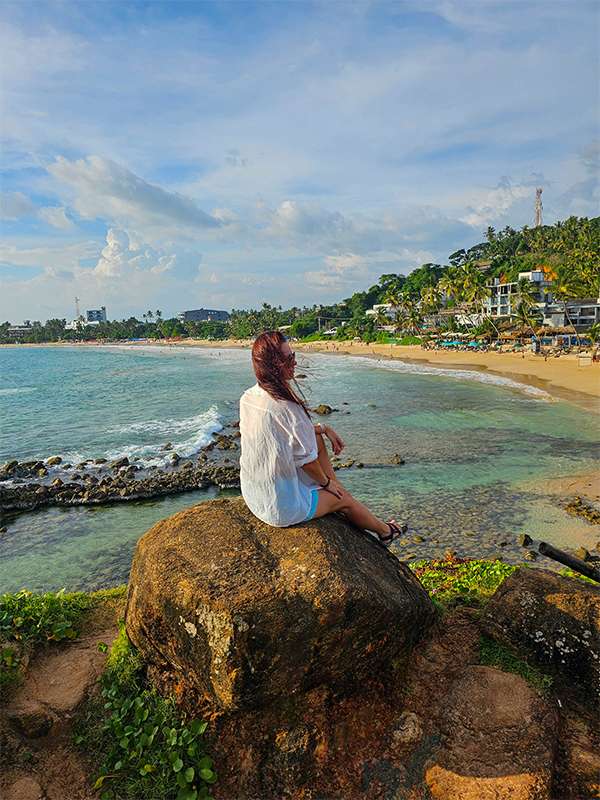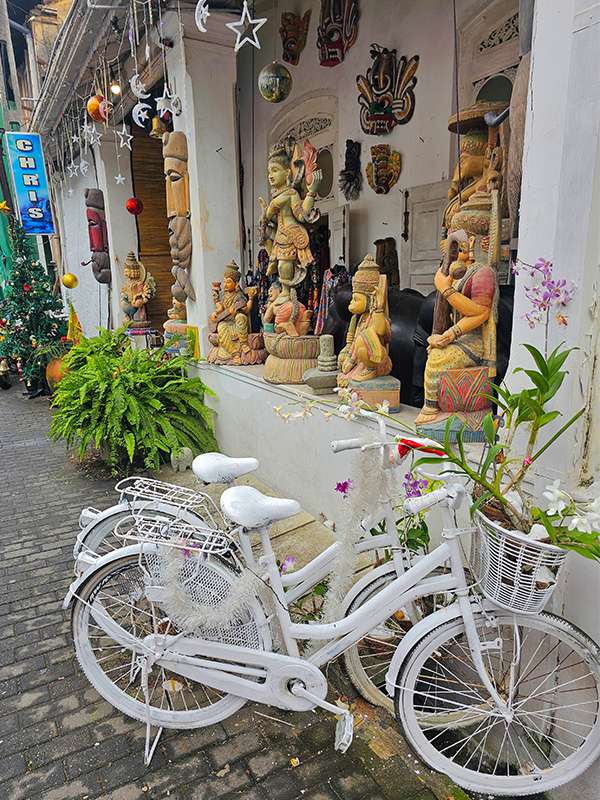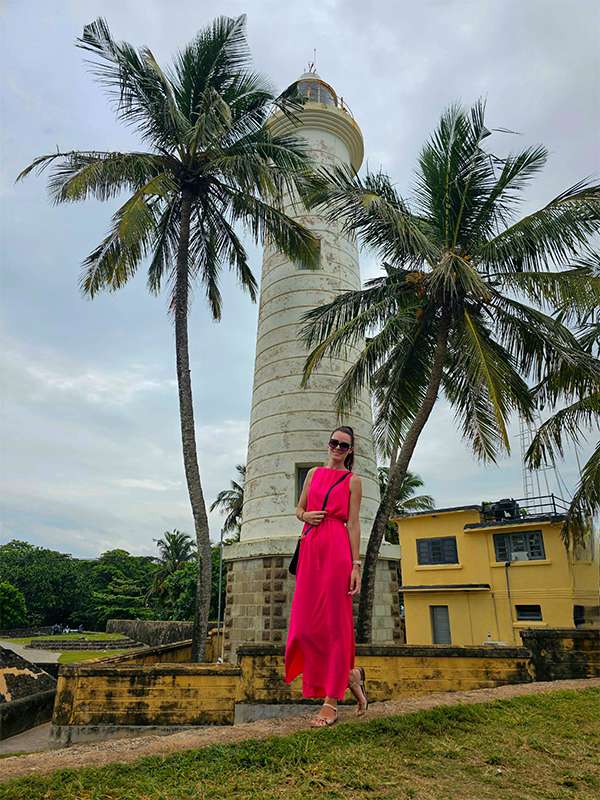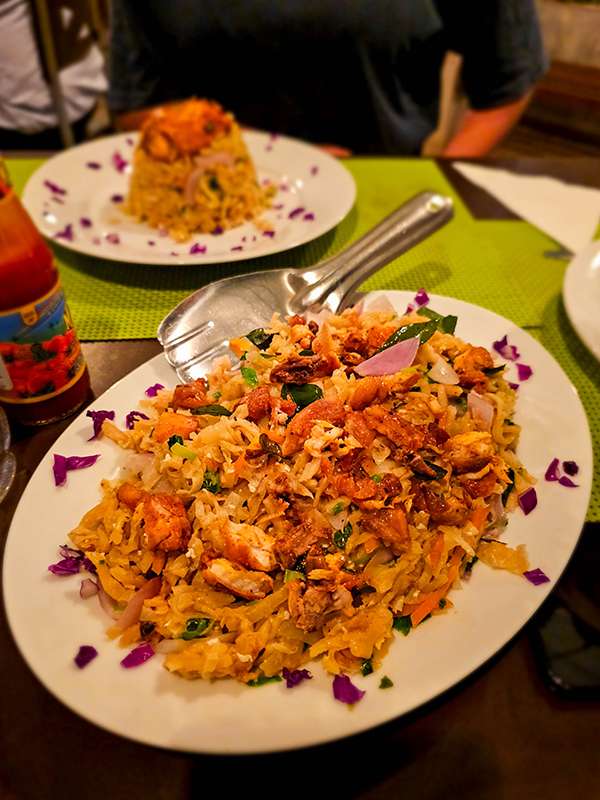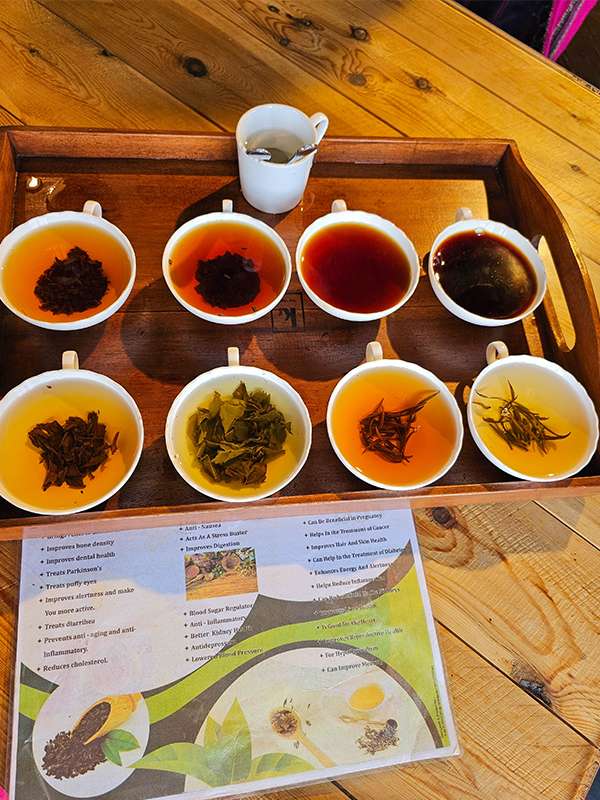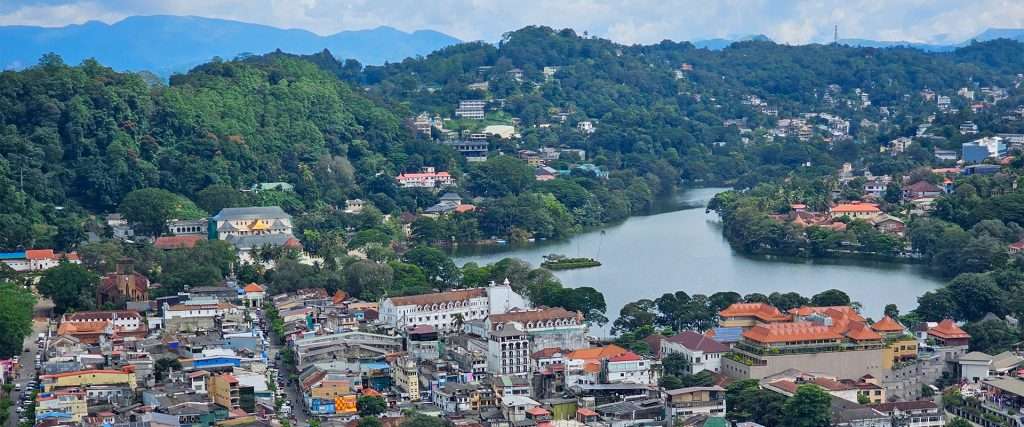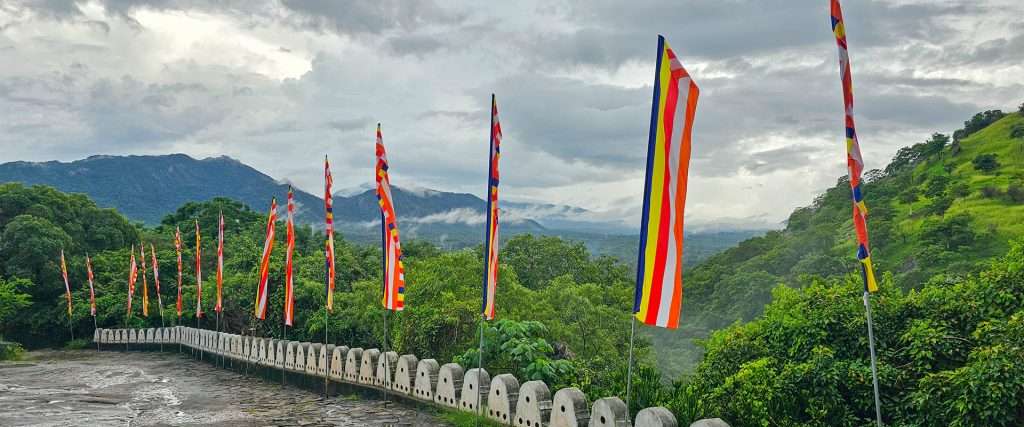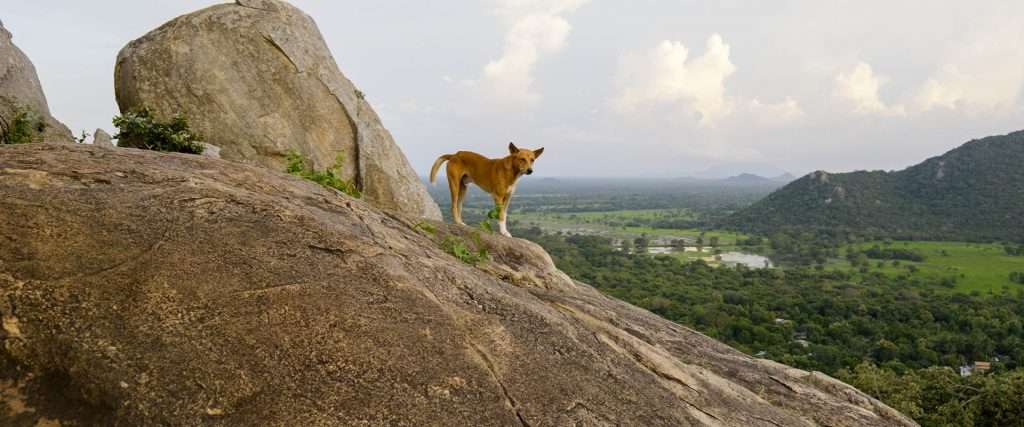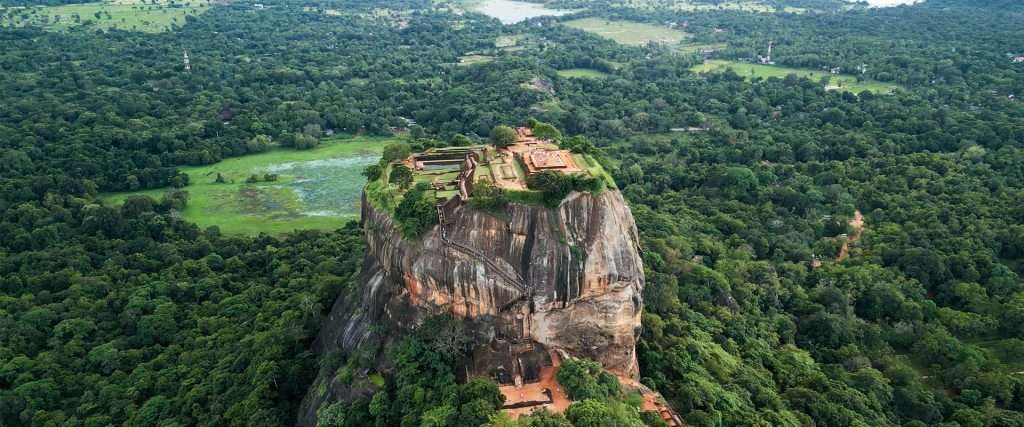This Sri Lanka travel guide will help you plan your trip across one of the most diverse islands in Asia. From ancient temples and tea hills to safaris and golden beaches, Sri Lanka has so much variety packed into one island.
What we loved most, though, was the warmth of the people, endless plates of curry, and the chance to experience local life up close.
In this guide, I’ll share everything you need to know before your trip: the best time to visit, how to get around, what to budget, safety tips, and more. And if you want a full route covering the island, don’t miss my 1 Month Sri Lanka Itinerary.
Sri Lanka at a Glance: Key Facts and Travel Insights
Geography and Location of Sri Lanka
Sri Lanka is a tropical island nation just south of India, surrounded by the Indian Ocean. Despite its compact size, it offers an incredible range of landscapes: misty tea-covered highlands, golden beaches, ancient cities, and jungles filled with wildlife. The island has a tropical climate with two monsoon seasons, so the best time to visit depends on which coast you are heading to.
Did you know?
Sri Lanka is home to the Sri Maha Bodhi tree in Anuradhapura, the oldest tree in the world known to be planted by humans, now more than 2,300 years old. The island also has 8 UNESCO World Heritage Sites, including sacred cities, cave temples, and natural wonders.
Religion and Language in Sri Lanka
Around 70% of Sri Lankans are Buddhist, with Hindu, Muslim, and Christian communities adding to the country’s cultural mix.
Sinhala and Tamil are the official languages, but English is widely spoken, especially in tourist areas.
Here are the most essential phrases to know
Hello | Greetings:
Ayubowan
Thank You:
Stuti
Excuse me:
Samavenna
Culture and Food in Sri Lanka
Sri Lanka’s culture is deeply shaped by Buddhism, visible in its sacred temples, colourful festivals, and daily rituals. You’ll also see influences from Hinduism, Christianity, and Islam, which together create a rich mix of traditions across the island. From ancient dances and Kandyan art to the rhythm of drums at temple ceremonies, culture here feels vibrant and alive.
Food is another highlight of any Sri Lanka travel guide. Expect fragrant curries, spicy sambols, and endless varieties of hoppers (crispy bowl-shaped pancakes). Street stalls sell kottu roti, a fried mix of flatbread, vegetables, and egg that’s chopped to the beat of metal blades. Along the coast, seafood is fresh and abundant, while in the highlands, tea culture runs deep. Don’t miss a visit to a plantation in Nuwara Eliya or Ella to sip Ceylon tea at the source.
Sri Lankan cuisine is affordable, diverse, and full of flavour; one of the many reasons travellers fall in love with the island.
Top Things to Do in Sri Lanka
No Sri Lanka travel guide would be complete without sharing the country’s highlights. For us, the real magic was in the variety. One day we were climbing ancient temples, the next sipping tea in the hills, and later watching the sunset by the ocean. From sacred mountains to wildlife safaris and hidden beaches, there’s an endless list of things to do in Sri Lanka
Explore the Cultural Triangle
Sri Lanka’s Cultural Triangle sits in the centre of the island and is home to some of its most important UNESCO sites. Visit the ancient capitals of Anuradhapura and Polonnaruwa. Climb Lion Rock or the nearby Pidurangala Rock in Sigiriya for sweeping views, and wander the cave temples of Dambulla. Kandy also belongs to this region and is home to the Temple of the Sacred Tooth, one of Buddhism’s most important shrines.
Discover Colombo, the largest city in Sri Lanka
The capital is often overlooked, but it’s worth a stop. Explore Gangaramaya Temple, shop in Pettah Market, or take a sunset walk along Galle Face Green. Colombo mixes colonial landmarks, modern skyscrapers, and lively local neighbourhoods, making it one of the most diverse destinations in Sri Lanka.
Ride the Scenic Train to Ella
The train journey from Kandy to Ella is one of the world’s most beautiful. It winds through misty hills, bright green tea plantations, and jungle valleys. Sit by the open door for the ultimate view; it’s a slow but unforgettable way to travel in Sri Lanka.
Hike in the Hill Country
Sri Lanka’s highlands are a dream for hikers. Climb Adam’s Peak for a sunrise pilgrimage, wander through tea plantations and waterfalls around Nuwara Eliya, or take on shorter walks like Little Adam’s Peak in Ella. Cooler weather makes it a refreshing break from the coast.
Go on Safari in a National Park
Wildlife lovers can’t miss Sri Lanka’s safaris. Minneriya and Udawalawe are famous for elephants, while Yala National Park is one of the best places in the world to spot leopards. Morning and afternoon drives both offer chances to see a wide variety of animals in the wild.
Relax on the South Coast Beaches
The south coast is perfect for slowing down. Hiriketiya is great for beginner surfers, Mirissa for its lively beach scene, and Unawatuna for calm swimming. Dickwella and Dalawella are quieter, with the chance to swim alongside turtles in Sri Lanka’s turquoise waters.
Visit Galle Fort
This colonial town is a mix of Portuguese, Dutch, and British heritage. Wander the cobbled streets, browse colourful boutiques, and sip coffee in stylish cafés. Don’t miss sunset from the fort walls, when the views of the Indian Ocean are magical.
Galle is not only rich in history but also one of the most atmospheric places to visit in Sri Lanka.
Taste Sri Lankan Cuisine
Food is a big part of the journey. Try spicy curries, hoppers, kottu roti, and fresh seafood along the coast. And don’t miss sipping a cup of Ceylon tea in the highlands, where it’s grown. A true highlight of Sri Lankan cuisine is eating with your hands, which locals say makes the food taste better. Simple, bold, and always delicious; the flavours here are unreal.
Sri Lanka Travel Guide: Essential Travel Tips & Must-Know Information
Planning a trip to Sri Lanka can feel overwhelming at first, but it doesn’t have to be. From busy cities and sacred temples to tea country and golden beaches, the island has something for everyone. In this Sri Lanka travel guide, I’ve gathered the key details you’ll need before your trip — from the best time to visit and visa requirements, to how to get around, budgeting, and staying connected.
Transport in Sri Lanka
Getting in & around Sri Lanka
- Airports: Bandaranaike International Airport (CMB) near Colombo is the main international gateway. Check Skyscanner or Trip.com for the best options
- Trains & Buses: The most popular and affordable way to travel in Sri Lanka. Trains are scenic but often slow and crowded. Buses go everywhere and are cheap, though expect them to be noisy and crazy fast
- Taxis & Apps: PickMe (local equivalent to Uber) is reliable in cities like Colombo, Kandy, and Galle. Tuk-tuks can be found everywhere, but make sure to always agree on the price beforehand if you do not use the app. If you are up for an adventure, rent your own tuk-tuk
- Scooters: Renting a scooter is one of the best ways to explore smaller towns and the coast. However, your International Driving Permit (IDP) alone isn’t valid. You’ll need to visit the Automobile Association of Ceylon (AAC) office in Colombo in person to get a local driver’s permit. Bring your passport, visa (just in case), IDP, driver’s licence, and cash (~8,000 rupees). Without this permit, you’re not allowed to drive in Sri Lanka, and your travel insurance won’t cover accidents
- Driving: Renting a car isn’t common due to chaotic traffic. If you want comfort, hire a driver with a car for part of your trip instead
Best Time to Visit Sri Lanka
- West & South Coasts / Hill Country (Dec–Mar): Best weather, perfect for beaches, safaris, and visiting the tea plantations
- East Coast (Apr–Sep): Dry season here, with great surfing and quieter beaches
- Monsoon Seasons: May–Sep (southwest) and Oct–Nov (northeast). The weather varies a lot, so plan by region
Tip: January to March offers the best balance of sunshine and travel conditions across much of the island.
Visa Requirements for Sri Lanka
- Most Nationalities: Need an ETA (Electronic Travel Authorisation) before arrival. It’s quick and easy online
- Validity: 30 days (can be extended)
- Longer Stays: Apply for an extension at the Department of Immigration in Colombo or online
- Costs: We paid $50/ person. For further info, check out their website
Tip: Always check the official Sri Lanka ETA website for the latest rules before your trip.
Staying Connected in Sri Lanka
- eSIM (Convenient Choice): Airalo works well for instant data access. Perfect if you want to be connected on arrival
- Local SIM Cards: Dialog and Mobitel are the main providers, offering good coverage and affordable data plans. Buy at official shops or at the airport (passport required)
- Tip: You can get a Dialog sim with 50GB data for 2450 Rs on arrival at the airport
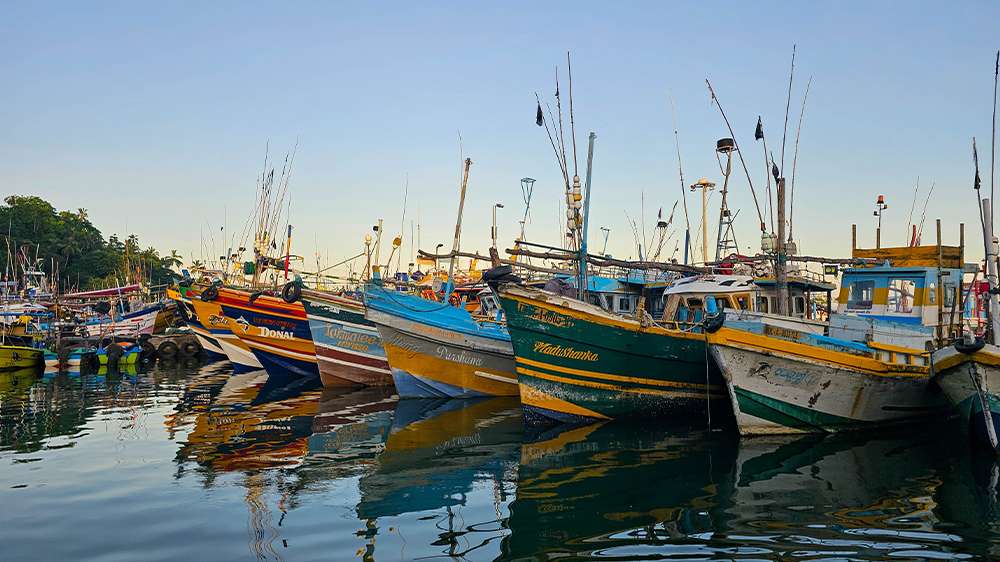
Money and ATMs
- Currency: The Sri Lankan Rupee (LKR). Cash is still king, especially outside major cities
- Cards: Credit and debit cards are widely accepted in Colombo, Kandy, and other big cities. However, many homestays, small cafés, and local buses only take cash
- ATMs: The most reliable ones are Bank of Ceylon (BOC), Commercial Bank, and Sampath Bank. BOC usually doesn’t charge extra fees, making it a good choice with travel cards like Revolut, Monzo or Wise
- Exchange: Skip airport kiosks with poor rates. Use ATMs or bring USD/EUR/GBP to exchange in banks if needed
- Tip: Always carry small notes for tuk-tuks, buses, and local shops, as change can be hard to get
Budgeting and Costs
Sri Lanka is one of the most affordable destinations in Asia. You can travel comfortably on a budget, though prices in tourist hotspots are rising. Here’s a rough breakdown per person, per day.
Budget Breakdown
- Accommodation: $10–40 (basic guesthouse to boutique homestay)
- Food: $5–15 (street food, local cafés, or a mix of local + Western meals)
- Transport: $2–10 (buses, trains, tuk tuks, short transfers)
- Activities: $10–30 (temples, safaris, cultural sites)
Total Daily Cost: $30–100 (depending on your travel style)
Tip: For a one-month Sri Lanka itinerary on a budget, expect around $1,000–1,500 per person.
Drone Regulations in Sri Lanka
Drones are legal, but there are strict rules.
- Registration: Needed from the Civil Aviation Authority of Sri Lanka for drones over 250g
- Altitude: Max flight height 120 metres
- Restrictions: No flying over people, cities, government or military areas. Drones are banned at major cultural sites like Sigiriya and temples
- Permits: Required for commercial use or professional filming
- Tip: Always check local signs. Guards may stop you even in places not listed officially
For full details and the latest updates, check the official guidance via the website of Civil Aviation Authority of Sri Lanka.
Health and Safety Tips
- Scams & Taxis: Always agree on tuk tuk fares in advance or use PickMe/Uber. Be cautious of overcharging in tourist towns
- Food & Water: Sri Lankan cuisine is delicious but can be spicy. Stick to busy places for street food. Tap water is not safe to drink; use bottled or filtered water instead
- Wildlife: Safaris are safe with licensed guides. Avoid unregulated turtle hatcheries; choose ethical ones or see turtles in the wild instead
- Petty Theft: Keep belongings close on buses and trains
- Health: Pharmacies are easy to find in larger towns. Travel with basic medication, as rural areas have limited supplies
- Emergency: Dial 119 for police, 110 for ambulance/fire, 118 for general emergencies
Travel Insurance for Sri Lanka
Travelling Sri Lanka is rewarding but unpredictable. From busy public buses and winding mountain roads to surfing and safaris, things don’t always go as planned. Travel insurance protects you in case of accidents, medical issues, or lost luggage.
I recommend SafetyWing Nomad Insurance as an affordable option for long trips. It covers:
- Medical emergencies & hospital stays
- Trip delays & lost baggage
- Adventure activities (like hiking Adam’s Peak)
- Scooter accidents
At $56 per 28 days, it’s flexible and easy to manage online while travelling.
Click here to get SafetyWing and enjoy Sri Lanka with peace of mind.
Get Inspired
Join us on a journey through Sri Lanka — an island of ancient cities, misty tea fields, and golden beaches. During our 1-month trip, we explore Anuradhapura and Polonnaruwa, climb Pidurangala Rock in Sigiriya, visit the Dambulla Cave Temples, and step inside Kandy’s Temple of the Tooth. We’ll also taste tea in Nuwara Eliya, ride the scenic train to Ella for the Nine Arches Bridge, and relax on the south coast at Dickwella, Hiriketiya, Mirissa, and Unawatuna.
Sri Lanka is packed with history, culture, and natural beauty — this video is your perfect inspiration for planning a trip across the island.

